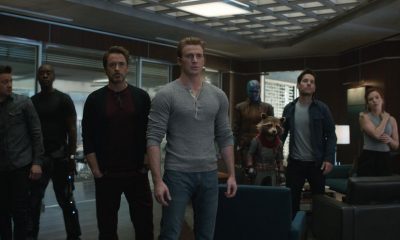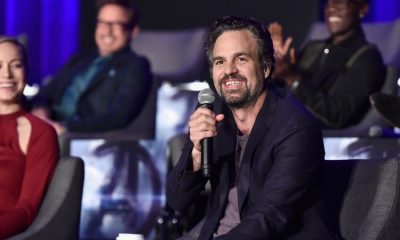Features
REVIEW: ‘Avengers: Infinity War’ (spoiler-free)
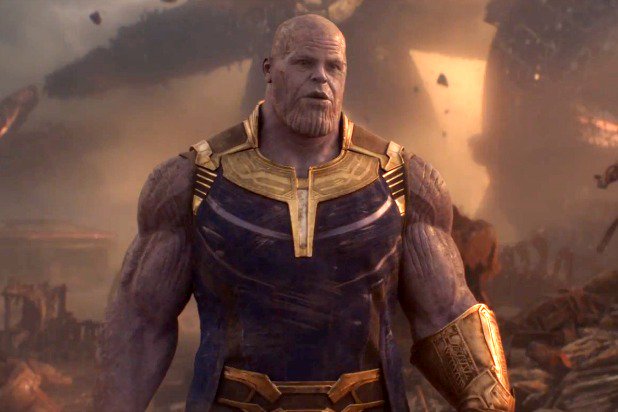
(This review is intended to be spoiler-free, only referencing plot points shown and implied by the main two trailers and some television spots.)
In the lead-up to Avengers: Infinity War, I had an unusual question on my head. While friends and colleagues pondered, “what if Infinity War sucks,” all I had in mind is “how can Infinity War suck?” In what specific ways can this film fall short and disappoint?
With me, it always comes back to the promises that the filmmakers made. The directors and screenwriters obviously did not give too much away about the movie in interviews, but unbeknownst to those who regularly digest comic book movie news and content, they essentially laid out exactly what this movie would be.
-
- This would basically be a series of vignettes, citing Robert Altman’s nearly three hour long ensemble film Nashville.
- It would feel like a “smash-and-grab” heist movie from the 1990s.
- It is the culmination of ten years of storytelling, and would bring in plotlines from all of the previous films.
- Most importantly, this was a movie with Thanos, our main villain, as the primary character.
I can tell you that the movie was almost all of that—yet, the film still completely threw me off guard.
The filmmaking team of directors Anthony & Joe Russo and screenwriters Christopher Markus & Stephen McFeely brought us Captain America: The Winter Soldier and Captain America: Civil War, the former being an air-tight, efficient and satisfying film, with the latter basically being a practice Avengers film, juggling multiple storylines and character arcs. Regardless of your opinion on the character decisions in Civil War, it’s hard to deny that it was a well-structured film.
I am having a hard time discerning any sort of story structure in Infinity War.
We all know at this point how the characters are divvied up through the film: Tony Stark, Doctor Strange, Spider-Man and most of the Guardians of the Galaxy eventually end up on Titan. Steve Rogers leads his team of secret Avengers with Falcon and Black Widow, eventually picking up Scarlet Witch, Vision, War Machine and Bruce Banner to meet up with Black Panther and company. Meanwhile, Thor goes on his own sidequest with Rocket and Groot.
The biggest surprise of the film to me was that all of these scenes and sequences had time to breathe. Despite having to cram so many characters into one film, the film never felt rushed, and the individual scenes were paced well with appropriate dramatic and comedic beats.
The film revels in its unexpected character team-ups, but it never feels like a child mashing their action figures together—rather, it results in some entertaining and intriguing character interactions. A good amount of comedy is extracted from Thor and the Guardians, the Guardians being perhaps the comedic highlight of the entire film. Stark and Strange butt heads, which at first felt a bit contrived, but grew into an interesting (albeit, still antagonistic) relationship. And we get more from some established relationships already, with Tony being more of a dad to Peter Parker, for example. And while it’s disappointing that most of Vision and Scarlet Witch’s romance happened off-screen, their plotline is one of the more fully realized arcs in the film.
But therein lies the problem, as some characters completely got the shaft in terms of character development. You’d think that the Captain America directors and writers would be biased to give Steve some meaty story, but despite some memorable action beats there was little to even be said about his character. Bruce Banner gets a mini-arc with his inability to turn back into the Hulk, but it goes absolutely nowhere save for repetitive verbal arguments with his inner self.
Perhaps it all makes more sense when you think back to the promise of Thanos being the main character. With audiences and critics may have been disappointed by previous Marvel villains, it was delightful to see Josh Brolin emerge as the MVP of the cast. It’s easy to groan at the trailer selling his idea of Thanos wanting to wipe out half of the universe, but this film made a large effort to explain his motivations. We’re used to our villains being gruff, mischievous, eccentric or even quippy, but Thanos was none of those.
While I was hoping that Thanos would be more than a giant brute, I didn’t expect displays of emotional vulnerability and even a sense of homeliness from who we are told is the antagonist; this is particularly evident in the scenes that he shares with Gamora. So when some of our many Avengers lash out at the Mad Titan and tell him he’ll never understand the tragedies and strife they had to experience, we as audience members know in the back of our heads that he truly does.
And that’s what this film, with all of its characters and locations and plotlines, was ultimately about: loss. Pardon my French, but Infinity War takes place in a time after all of our characters have had the shit kicked out of them. We see how exhausted and damaged and aged these characters are, from Thor’s eyepatch and haircut to Steve’s worn-out suit and long hair. Thor and Peter Quill at one point exchange sob stories, summarizing the insane and tragic events of Thor: Ragnarok and Guardians of the Galaxy Vol. 2. And as Tony tells the other characters, his own visions of loss in the future have plagued his mind for years.
It’s a theme that works, and it ultimately serves Thanos the most. So subverting expectations of what an MCU movie is, our villain ultimately has the fullest character arc.
However, it’s a bit difficult to track this arc in this long and epic film. While I stand by my complement to the film that each individual scene and sequence had a nice rhythm and flow to them, the way in which these scenes are stitched together into a single film didn’t exactly sit well with me. Many times throughout the film, after we transition from one scene to another, I said to myself “oh yeah, I forgot this was happening.” While it’s fantastic that these scenes got the time that was needed to be successful dramatically, it was time in which everything else that is happening in the film slowly leaves your mind, and returning to other locations gave a sort of whiplash effect. It ultimately felt that the whole was not greater than the sum of its parts.
Adding to my disappointments was the musical score from famed composer Alan Silvestri. Despite some excellent and appropriate use of his primary Avengers theme, the score ultimately felt middling, and did little to nothing to enhance any of the emotional beats of the film. I couldn’t hone in on a distinct musical motif for Thanos, and I was disappointed that no character themes, not even Silvestri’s own Captain America theme, were referenced—the closest the film came to that was a copy-and-paste of Ludwig Göransson’s Black Panther theme in an establishing shot for Wakanda. (EDIT: Months later after rewatches, I completely take this back. The score really amplifies the high emotional beats of the film. I was a fool.)
On the positive side, as expected, this film had plenty of crowd-pleasing “epic” moments that had my audience cheering, yelling and clapping. The action is a bit more CGI-heavy than we’re used to from the Russo brothers due to the supernatural and science fiction nature of these characters, but certain sequences brought out the best of the characters’ power-sets. The most impressive of these was Team Iron Man’s attempt to remove Thanos’s gauntlet, with Tony, Strange, Spider-Man and all of the Guardians really going all at it with their respective powers in ways we haven’t seen on screen. It was truly a comic book nerd’s dream.
But switching back-and-forth from the action on Titan to the battle of Wakanda only seemed to prove my gripe about the editing and “structuring.” Right as we get invested into one of these sequences, we abruptly switch back, interrupting action beats that should be heartstoppers like Thanos throwing a damn moon. And with the larger scale battle at Wakanda, don’t expect something along the lines of Helm’s Deep in The Lord of the Rings; unfortunately for this fractured action sequences, there was rarely a sense of geography and space, and the whole affair felt weightless despite an impressive set-up and amazing visuals.
So having watched and analyzed these films for the past ten years, and with my intense emotional and intellectual investment in the Marvel Cinematic Universe, I think I can say with some authority that Avengers: Infinity War does not suck. Its flaws are evident, but perhaps with this many characters and plotlines, they were mostly unavoidable, which requires the audience to forgive a lot. I came out of this film boggled and wondering what the heck they can do next with the story. The story ends with a resolution that is risky—but thinking back to how comic book events work, the risk could be averted with retcons and reset buttons.
Avengers: Infinity War is predictably fun and entertaining, while also being unusually dark and containing a real storyline for its villain. I certainly did not hate it, but it’s hard for me to formulate a final opinion when we have a sequel to wrap everything up next year. I predict that hardcores such as myself will appreciate the film, with everyone else on the fandom spectrum, with general moviegoing audiences at the end of said spectrum, will be divided, and quite possibly alienated.
This will not be the film that they expected.
Features
Punisher Season Two Carefully Balances Frank’s Humanity, but Struggles With Dual Conflicts
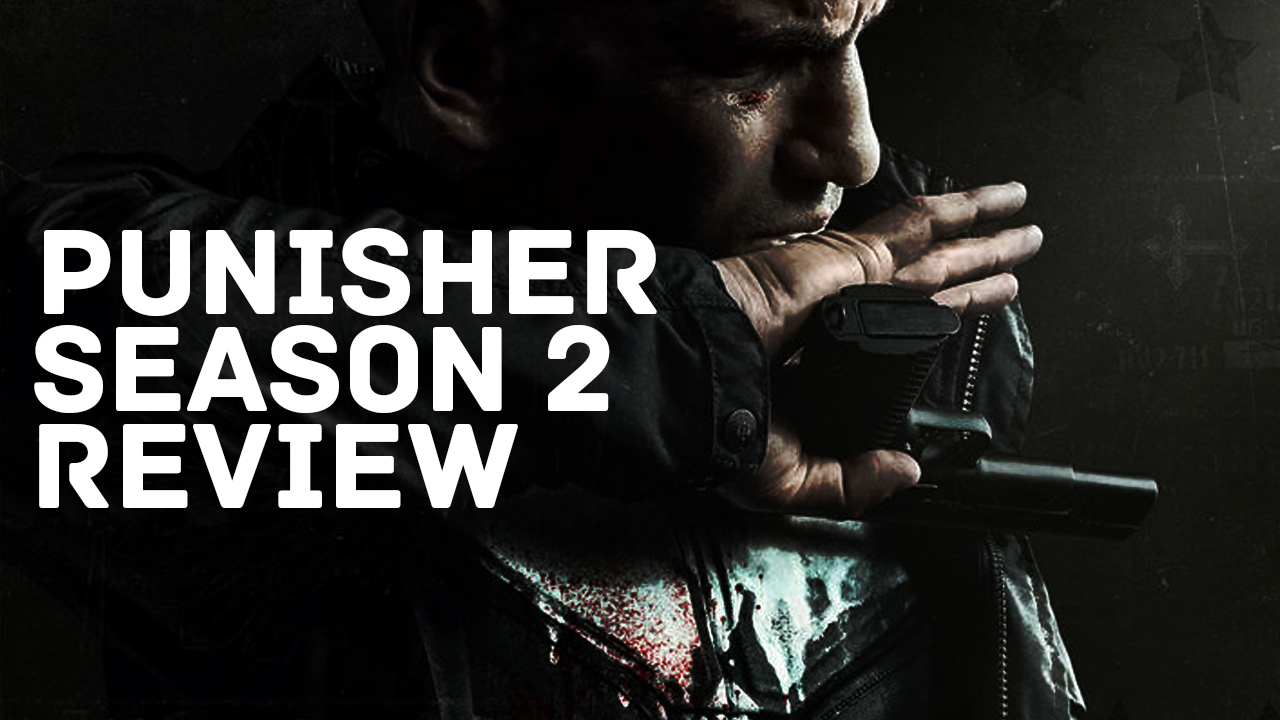
On January 18, The Punisher will be back on Netflix, with Jon Bernthal returning to keep the character alive on a platform where Marvel shows have been producing great quality, but still haven’t been able to survive. Fans were first introduced the the character in Daredevil season two, where fans learned the backstory of Frank Castle, a veteran and father, who’s family was killed in front of him after returning from war. When Castle returned to Netflix for his stand-alone series, we got a slightly altered background story, focusing on his war buddy, Billy Russo, played by Ben Barnes, as a force behind the killing of Frank’s family that day by the carousel.
Season two of The Punisher has some strong moments, particularly in the beginning. While season one hinted that Castle’s fighting days may be over, as he took the identity of Pete Castiglione and sat in on some group therapy, season two shows that Pete is just as much of a fighter as Frank.
The first three episodes are the best of the season. These could stand-alone as a new series about Pete living in the Midwest trying to carry on with a normal life, but his protective instinct pulls him into trouble. Unfortunately, the show moves Frank to more familiar territory, and after that move the show struggles to find balance. The storyline focused around a gang of religious extremists intent to kill Frank and the young woman he’s protecting never finds familiar territory with the second story, where Billy Russo re-emerges as a threat to New York.
The young woman Frank is protecting is Amy Bendix, a new character brought to life by Giorgia Whigham. Amy joins the other strong women of the series (such as Dinah Madani and Karen Page in Season one) on a path to prove that beneath all of the violence, the Punisher himself is a decent human being.
And that conflict, the humanity of Frank and his ability to kill people without hesitation is a topic of discussion throughout the whole season. Characters confront their own anger, haunted by demons of their past, and try to decide if they can be the type of killer that Castle can be, without becoming the person that he is. At times, it is a bit too much of people staring at their own navels, talking to therapists, and drinking away their emotions. However, ever since The Punisher branched off on his own, the show has crammed it down the audience’s throat that the people on the show are real, and not to be looked at as killers with no chance at redemption. At times this is the show’s biggest flaw – it’s trying too hard to prove that Frank is, and is surrounded by, good people.
Could Billy Russo be one of those good people? As Billy recovers from his injuries incurred at Frank’s hands, his possibility for redemption becomes a major topic. Russo loses a part of himself when he recovers, but it isn’t his humanity. If anything, the character comes back as a more tender, loving person. His arc may have felt more fresh if we had more time between the story of a mentally unstable villain seeking his north star in Daredevil before watching Billy on his own journey of mental healing. However, the therapist that helps Billy find himself again serves as yet another woman around the men of the series that helps remind the audience, and the characters, of their humanity.
I struggle to find much to say about the new villains of the season, a group of religious extremists that want Amy and Frank dead. While the show presents these characters as mysterious villains, it was hard to find a reason to care about their stories, motives, and goals. Something never really clicked to make them more than a way to add material and complexity to a show that could have been exciting enough with the stories available in New York. But they give us Amy, who is a delight, even if her storyline falters.
One high spot in the series is an amazing soundtrack of heart-felt blues renditions of classic songs, woven into emotional moments along the way. Just as Luke Cage takes you to Harlem with it’s sound track, the tunes chosen for emotional moments in The Punisher feel like American simplicity. With acoustic guitars accompanying shoot-outs, it’s as American as the single-wide trailer where Frank and Amy live for much of the season.
If you are still holding out hope for cross-overs between the Netflix shows, you should realize by now that we likely aren’t going to see any title characters showing up without a little bit of hype before-hand. However, Frank does continue to live in a world where New York City only has one cop of note outside of Harlem, and that is the beloved Brett Mahoney, portrayed by Royce Johnson. Johnson comes close to stealing the show in this upcoming season, appearing frequently, with a personality created by being the one person in law enforcement that still cares to follow the rules.
On January 18, you may not want to cancel all plans to watch the series as fast as you can, but the beginning of the season is strong enough to pull you back in, even if you don’t remember many details from Season one. And if we never see more of Frank Castle and his own side of the Netflix MCU after this season, things are wrapped up nicely enough that we won’t be as angry as those that watched all of Iron Fist.
Features
Runaways Season 2 Feels Like A Step Back

Runaways Season 2 is an unusual show to review, in that it is not often a sophomore effort is the first to truly live out the premise of the show. With the so called Runaways staying at home for most of Season 1, the first go round with the teens served as a sort of extended pilot more than anything. The obvious confidence Hulu had in the property, with its almost assured second season, allowed Brian K Vaughn and team to do things in that first season that deepened the foundation of the characters and ultimately should pay off. None the less, Season 2 is the first time we’ve truly seen the teens on the run.
Early on, this new reality helps the show come to life. The obvious hazards of being on the streets, struggling for money and food, and trying to adjust to falling from the 1% to homelessness make for engaging drama in the beginning of the season. This setup gives the show an edge and sense of danger that was too often missing in the first season, filmed mostly in mansions. Sadly the premise is stripped away far too quickly as the characters move into digs that are comic accurate but which also blunt the point end of being a runaway in the first place.
My general concern with this season, and the show in general, is that far too often it feels uncomfortable in its own skin. Some of the time it is a teen melodrama that is almost embarrassed of its super hero trappings. At other times its a super hero show that has long lulls where puberty seems the real villain, not the alien antagonist. Some fans will undoubtedly feel like the mix is just right, giving them just the right dose of each. And the source material, the modern classic comic series, is a bit like that as well. For me it just felt like both halves seem rushed in order to make sure that the other half isn’t underserved. As such the adolescent soap opera doesn’t have space to breath and the comic fight scenes feel far too short.
The challenge of a large cast is obvious in this show. Characters disappear for a few episodes at a time. That’s the nature of this beast. Generally, the show is at its most alive when the characters are all in one room, at least the six protagonists. The wit is fast paced and typically well timed by the actors. It can have an Alan Sorkin kind of electricity in the dialogue. But too often the characters are sent off on character development homework side missions, which don’t have the same energy. Chemistry is what makes and breaks this show and it is often a roller coaster entity in season 2. Some scenes are spectacular and others just lack punch.
The powers and special effects on the show also tend to get under served in production. For a group of kids constantly running head long into trouble, they seem to always leave their dinosaur at home. Maybe just once it would make sense to bring along his muscle, if only the show wasn’t hiding him away lest they over play their puppeteering skill or blow out the budget. One consistently wonders if the brief VFX scenes are due to the desires of the show runner, or a property that maybe is misplaced in TV financing world. Its not that anything looks bad, its just all very short. A mid-season climax point that is clearly meant to be a special effect bonanza ultimately feels like 25 actors looking at each other menacingly without enough things actually happening. In particular, the Runaways as a team don’t manage the kind of combinations and power complementation that makes a team up like the Avengers, Guardians of the Galaxy, or even Quake and Ghost Rider on Agents of SHIELD, so satisfactory.
A mention should quickly be made of the characters and their arcs. Nico is coming to grips both with her new relationship and the fact that she has replaced Alex as the de facto leader of the group. This weight is in fact heavy for her. Molly continues to grow out of adulthood and into a role with more agency. This leads to the kinds of mistakes all people make when maturing. Alex is sort of the outsider after falling out with Nico, so viewers get to see him connect with unlikely people in a new community. Chase is stripped of all the things that made him a hot shot. He’s struggling with a more domestic role and how to show sensitivity. Gert has some personal health issues that throw her off stride. And Karolina is trying to figure out who she really is. This leads her to seek answers in a really questionable place. The performances all have highs and lows, with Allegra Acosta’s Molly maybe being the most consistent character.
Generally the acting in this show gets a little cringe worthy at some times. The material leans so heavily into the world of melodrama its is kind of hard to take some lines and takes seriously. Did they really just say that? Somewhat paradoxically, the show really clicks on two ends of the spectrum. First of all, the relationships and the experiences of hurt ring true. When these characters are people first and superhero second, they tend to be believable. Secondly, some of the world building, particularly some later season flash back work, is interesting and engaging in part because it’s completely over the top. Its just the in between stuff that can be messy.
As a huge fan of Season 1, this second season does feel like a step back. One can see what the show runners are aiming for, but they just miss the execution. The pacing and storytelling are too muddled and ultimately it feels like that hurts the performances. Too many hand break turns are happening for any groove to occur in the show. Actors are trying to do legitimate human emotion on minute and then ten minutes later they’re in the midst of a monologue about cosmic pseudeoscience or engaged in hokey slow mo fights. A lot of good stuff is in this season, and the fans will probably still enjoy it, but the show needs to make more hard decisions about what it really is and what it really wants to be.
Features
How Daredevil Season 3 Depicts the Fight Against Real and Present Fears
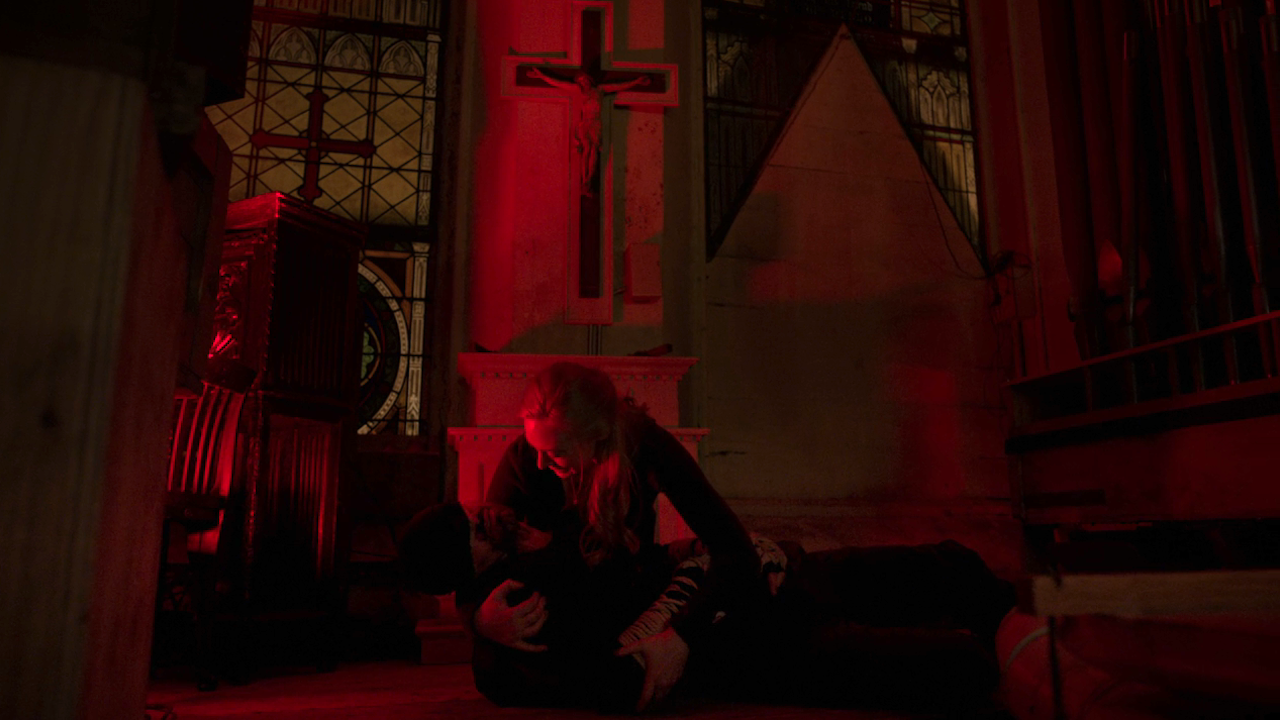
(Content Warning: mass shooting tragedies in the United States; Spoiler Warning for Daredevil season 3)
Those living in the United States have gotten too accustomed to bad news. Every mass shooting, wildfire, and other various tragedies have become distilled to push notifications on phones and headlines on cable news. I’ve felt a certain guilt for an increasing indifference as the bad news has increased in volume, but I felt this even more so when the news finally reached me personally. The Tree of Life shooting in Pittsburgh set something off in me, as I went to school mere miles away from there, and I visited Squirrel Hill for leisure and errands regularly. I felt sorrowful and uneasy knowing that such a nefarious act was committed in an area I once considered to be practically my backyard.
It had an eerie and troubling effect on a piece of media that I treasured, as only a couple of weeks before this real-life tragedy, Netflix released season 3 of Daredevil, which prominently featured a chilling scene of a fatal attack on a place of worship.
What that television show did might not necessarily be bad taste, as it released before the real-life analogous event occurred—it isn’t the same situation where the Las Vegas shooting prevented the apparently-planned early release of The Punisher, or Paramount executives scurrying and attempting to release their Heathers television reboot in piecemeal, attempting to slip their tone-deaf program in-between real-life tragedies. Still, the proximity in date alone puts a shroud over Daredevil in my eyes, and a rewatch is impossible for me without associating it with the act of hate and domestic terrorism that happened in a city I love.
I eventually thought back to the words of Erik Oleson, the showrunner of Daredevil’s third season. I attended the Daredevil New York Comic-Con panel, where Oleson presented his thesis statement for season 3—it would be about “combating fear and the narcissistic tyrants that weaponize it.” The Tree of Life shooting is not the only recent news event that could be analogous to events in his show, and none of these were unfortunate coincidences—these were by the show’s design. Daredevil season 3 tapped into our real-life fears and anxieties, and like practically all superhero fiction, it presented a fantastical story where those fears were conquered.
To anyone at that NYCC panel with their finger on the pulse, it was obvious just what (or who) Oleson was referring to. Wilson Fisk, finally embracing the role and appearance of the Kingpin, is our narcissistic tyrant.
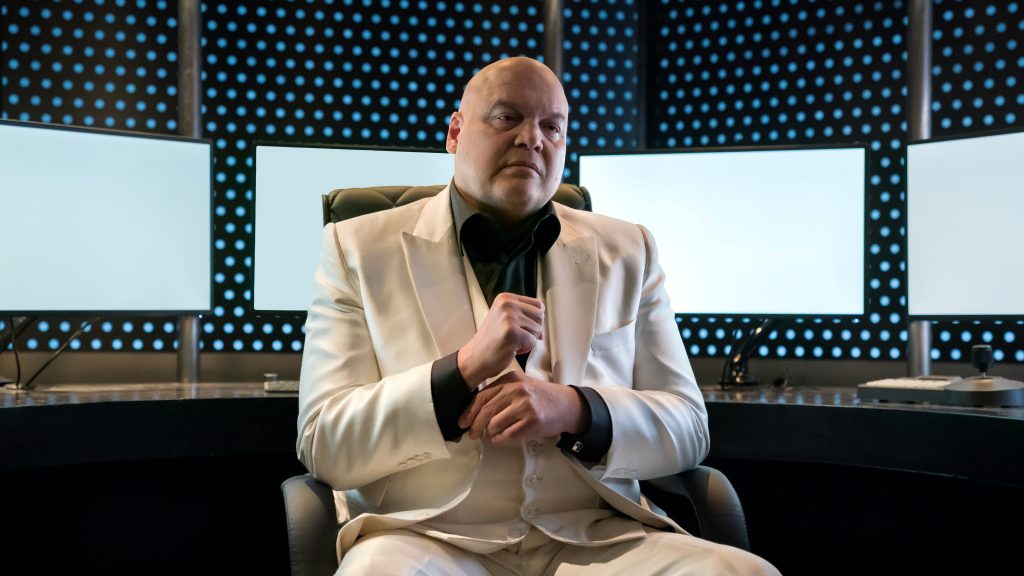
Marvel’s Daredevil
At its bare bones, Fisk’s plan to cultivate a culture of fear isn’t far from how real-life tyrants do so. Despite the general public knowledge of his misdeeds, even garnering chants of “Lock him up!” outside of his lavish New York penthouse, Kingpin is able to obtain the trust of the common citizens. Fisk’s apparent ace in the hole is a fake Daredevil, with a skilled FBI agent that Fisk himself corrupted donning the red horned costume. With this terrorizing Daredevil imposter, Fisk creates a new public enemy for all to fear, projecting an image of power and safety that only he could provide.
And the imposter in question, Agent Pointdexter, is a troubled man with psychopathic tendencies and a desire to learn about empathy. Found in a vulnerable position, Dex is manipulated and deceived to enact Fisk’s plan of wide-scale gaslighting. And as we find out later in the season, Fisk’s corruption and manipulation of institutions such as the FBI has reached an absurd point. No character in Daredevil season 3 can better personify this than Agent Ray Nadeem.
In a period of time where many in the public are less trustful of law enforcement officials and the institutions that enable and protect them, it may be harder to swallow more idealistic portrayals of them through fictional portrayals. Not everyone is Special Agent Dale Cooper from Twin Peaks or the lovable bunch in Brooklyn Nine-Nine. But there was something captivating about Nadeem’s own troubles and anxiety that brought him down to a more grounded level. His anxiety was economically-based, as a result of covering his sister-in-law’s health care coverage. Seeing a struggling, suburban Indian-American family just barely making it was instantly more tangible than the more lavish, romanticized views of such law enforcement officials on television.
I don’t believe that anyone in this season of television had it harder than Nadeem. He is torn between his duty to provide for his family, his own moral, ethical code, his loyalty to his agency, his friendship with Dex, his desperation to fight through the bureaucracy denying him a larger paycheck, and so many other forces that are in play. By the end of his plight, Nadeem leaves a mixed legacy. While he was complicit in many of Fisk’s crimes, he was also key to bringing the entire operation down. In a season where FBI agents are shown to be corrupt in a cartoonish fashion through a boardroom scene, Nadeem being the only one with an apparent conscience gives slight “not all cops” vibes, while at the same time being truly reflective of the hidden fears and anxieties even within the upper-middle class that can be exploited by bad actors.
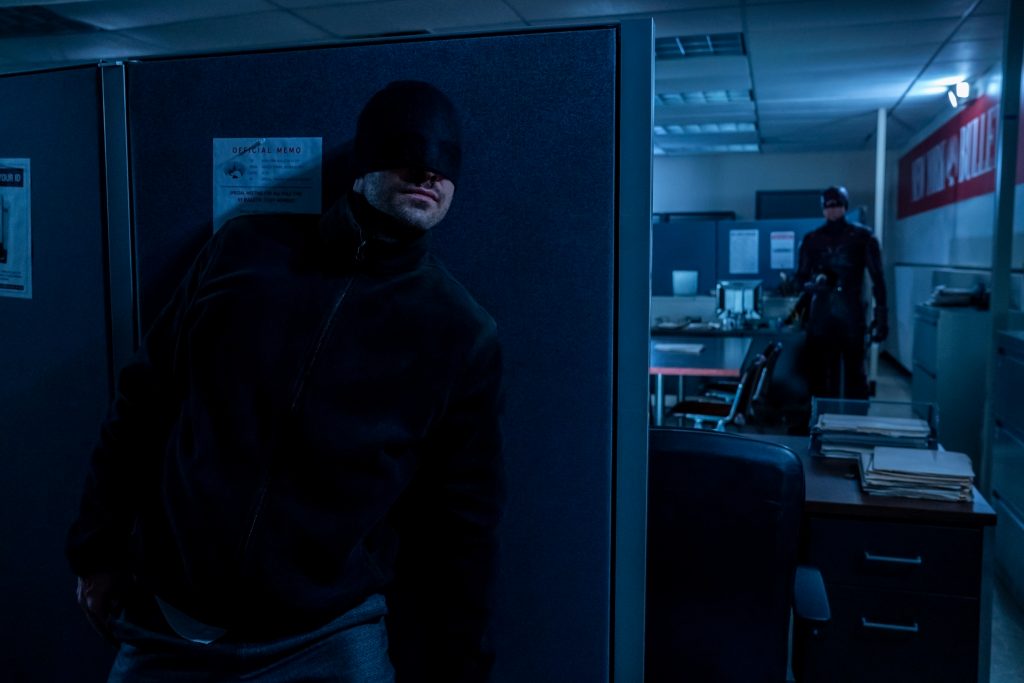
Marvel’s Daredevil
Let’s rewind back to the point in which the paths of Matt Murdock, Dex, and Nadeem all converged, in a manner orchestrated by Fisk. There was something powerful and fateful about the first meeting of the two “Daredevils”—halfway through the season, both characters have individually gone through radically different journeys of self-exploration, and the clash between the two was like a chemical explosion. While I reveled in the creativity of the choreography and the display of Dex’s ability when the New York Comic-Con showed off the Bulletin fight sequence, something seeped into my head on my repeat viewing weeks later.
I had a sinking feeling that the context of the scene, with Dex murdering New York Bulletin journalists, and the fight scene taking place in their office space, was meant to be a reference to another recent tragedy. It seemed to me at the time that this unsettling sequence was meant to mirror the real-life June 2018 shooting at the Capital Gazette building, home of publications The Capital and Maryland Gazette, where five employees were killed.
It was sometime before writing this piece that I did my due diligence and found that production of Daredevil season 3 ended earlier in June, a couple of weeks before the tragedy occurred. For the most part, similarities were mere coincidence. Still, anyone with their ear to the news in the United States knows fully well that this anti-journalist sentiment was alive and well before this attack. One of the more important pillars of our modern society is that of the journalist and the news publication, having the freedom to hold those in power accountable to the truth. Likewise, these Bulletin reporters, led by Karen Page, were working on a piece that would have shed some light to Wilson Fisk’s fragile situation. Fisk nailed two birds with one stone, dispatching of the opposition, while also creating his false public enemy.
As with the aforementioned church attack in the show, the timing between the show’s premiere date and real-life events yet again produced an unusual effect. Another pillar of our society, one based on worship and faith, was under attack by violent forces. While these fictional and real events have no direct relationship, this frightening sequence was certainly based on a real attitude of intolerance that has been pervasive for the longest time. The context and scenario are different from reality, but the imagery remains the same to recall such real-life fears and anxieties.

Marvel’s Daredevil
Our main characters of Matt Murdock, Foggy Nelson, and Karen Page eventually get to a point where they must decide how to solve this impossible dilemma. The idealistic Foggy still firmly believed in the United States justice system, while a weary Matt believes that his vigilantism is the only solution. In real life, the justice system has been exploited, abused, corrupted, and has overall acted as a counter in favor of bad actors—I remained unsure of which method the show was advocating for. In the end, it seemed to favor a one-two punch combination.
If anyone is looking towards fantasy for solutions to real-life problems, they will find themselves sorely mistaken. Our current problems with combating cynicism, authoritarianism, and other negative forces will not be solved by two macho guys mercilessly punching each other in the face. While nothing will convince me that all art and media isn’t political, I will concede that entertainment such as Daredevil is meant to be escapism. I would argue, however, that the concept of “escapism” is grossly understood.
Not all escapist fiction is meant to completely take you away from the clear and present societal and personal anxieties. Rather, much of it is meant to take you to a place where those fears and anxieties can be confronted and defeated in a fantastical way—maybe it’s with a sword and shield, super strength, or the ability to fly. This is the fantasy that superhero fiction is able to provide.
Daredevil season 3 will obviously not solve any of our real-life problems—but it demonstrates that something as fantastical as the MCU can be very powerful by recalling realistic imagery and sentiments. In a society where people are fearful to live their regular lives under the threat of violence, however real or false that threat may be, and with bad actors exploiting that very fear, we need a fantasy like Daredevil. Season 3 is all about how he earned the famous moniker “the Man Without Fear.”
Daredevil may not be able to save us in real life, but perhaps for some people, he could inspire them to be just as fearless.
-
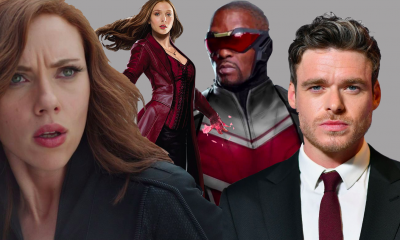
 Marvel News Desk4 years ago
Marvel News Desk4 years agoBold 2020 MCU Predictions-Marvel News Desk #145
-
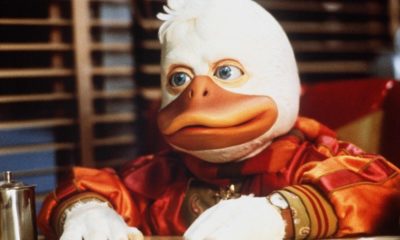
 Features6 years ago
Features6 years agoHoward the Duck: The First MCU Movie?
-
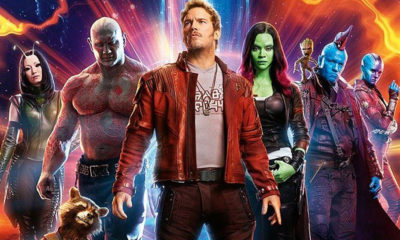
 Lists6 years ago
Lists6 years ago5 Characters We Want To See In ‘Guardians of the Galaxy: Vol. 3’
-
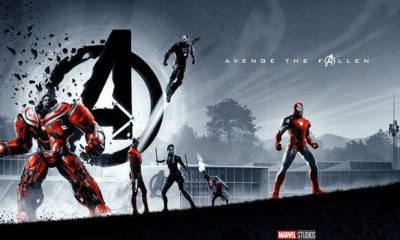
 Uncategorized5 years ago
Uncategorized5 years agoAvengers: End Game Spoiler Review-Marvel News Desk #114
-

 Features5 years ago
Features5 years agoRunaways Season 2 Feels Like A Step Back
-

 Marvel News Desk5 years ago
Marvel News Desk5 years agoLegion, S.H.I.E.L.D., and Jessica Jones TV Review Central-Marvel News Desk #123
-
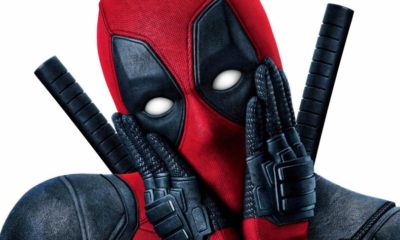
 News6 years ago
News6 years agoCONTEST: Win a Digital Copy of Deapool 2 Super Duper Cut & Deadpool
-
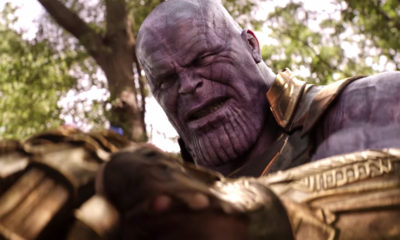
 Marvel News Desk5 years ago
Marvel News Desk5 years agoDisney+ Revealed and Infinity Saga Retrospective-Marvel News Desk #113


